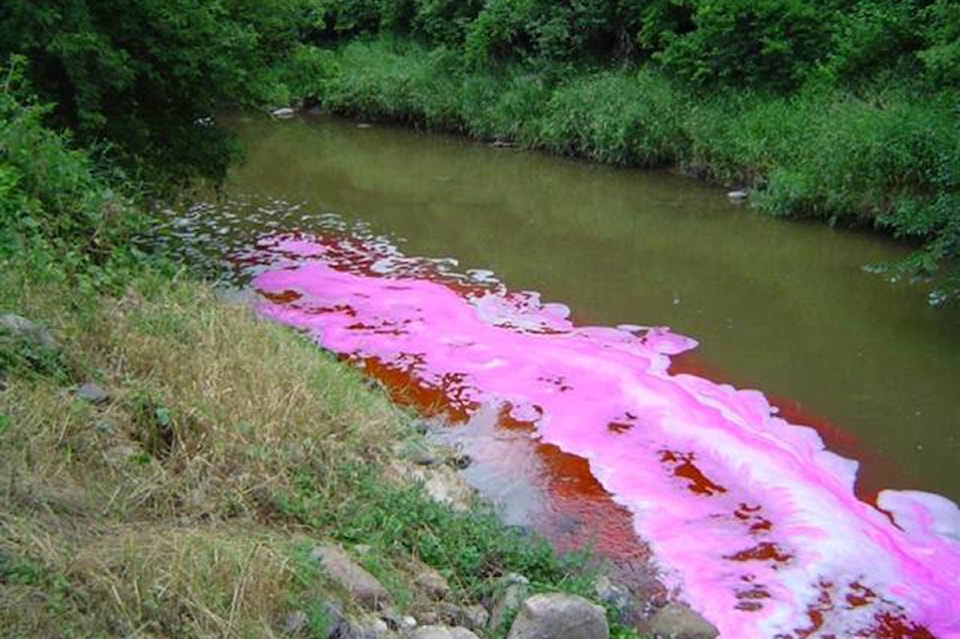Don’t panic if you see ribbons of brightly-coloured liquid flowing through the Skeena River this summer.
The Kitsumkalum Fish and Wildlife Operations Department (KFWOD) will be staining the river with non-toxic, biodegradable rhodamine dye to develop a spill response plan for train derailments in the Skeena watershed.
Knowing how a spill will behave will help KFWOD identify locations for caches of spill-response equipment between Terrace and Prince Rupert.
“Rivers are very difficult to protect. Oceans are a lot easier because it’s open water,” says Mark Biagi, KFWOD manager. “The lower Skeena has a lot of islands, a lot of meandering and a lot of grading on the bottom. We need to understand, if there is a derailment along the river, how do we protect the salmon, how do we best respond.”
With the help of the Kitselas, the Kitsumkalum spent a year creating a high-resolution map of the CN rail line from from Kitimat to Terrace, and Kitwanga to Prince Rupert. In Phase 2, Kitsumkalum identified all the areas of importance to salmon habitat. For Phase 3 KFWOD have engaged Northwest Hydraulic Consultants to create a workable model of the Skeena.
The dyes will be tracked by drones and a “battery of sensors” to digitally amplify the rhodamine’s presence. GPS-equipped sensors will also be tracked by satellite to map long-range impacts.
READ MORE: No health, safety risk after acidic spill into Columbia River: Teck
“We already know where the sensitive areas are, and now we can start looking at how to protect them,” Biagi says. “Where do we intercept the spill? How do we corral the spill, get it into an area we can manage it and clean it up?”
The first dye and sensor release will take place around July 2 near the bridge crossing of the Kalum River. The second will likely take place mid to late August in the Terrace area. The dyes will take about seven hours to dissipate and will be either yellow or red in colour.
The study will not impact fishery openings or other river activities, says Biagi.
KFWOD has been working with the provincial government on this project through the framework of a Geographic Response Plan program, and with the federal government through the Marine Protection Plan.
“The problem is, salmon habitat are federal jurisdiction and rivers are provincial jurisdiction. It’s a jurisdictional quagmire,” Biagi says.
“What we’re doing is trying to prevent that from becoming the reason why we do nothing when a disaster happens.”
In addition to current volumes of hazardous materials carried to and from the coast, Vopak Pacific Canada is proposing to build a bulk liquid petroleum export facility on Ridley Island near Prince Rupert that will require an increase of 240 rail cars per day travelling through the area — 60 for liquefied petroleum gas and 90 for clean petroleum products, such as diesel or gasoline, and 90 for methanol.
Since the completion of the AltaGas propane export terminal in Prince Rupert, rail traffic is already increasing by up to 60 cars of propane passing through the watershed per day.
That number may double if a second propane export facility in Kitimat, Pacific Traverse Energy, goes forward.
“We’ve been working very diligently to get the federal government to accept the fact that if a spill takes place on the Skeena, it’s going to end up in the estuary and marine environment,” Biagi says, adding CN Rail has been very cooperative in the project.
Once the study is complete, the Kitsumkalum will share their findings with CN Rail and both the B.C. and Canadian governments to develop a geographical emergency spill response strategy.
“We ask for the public’s patience and understanding as we carry out our study. There are no impacts while the study is taking place. Just a dramatic and temporary change in the colour of the river,” says Biagi.
